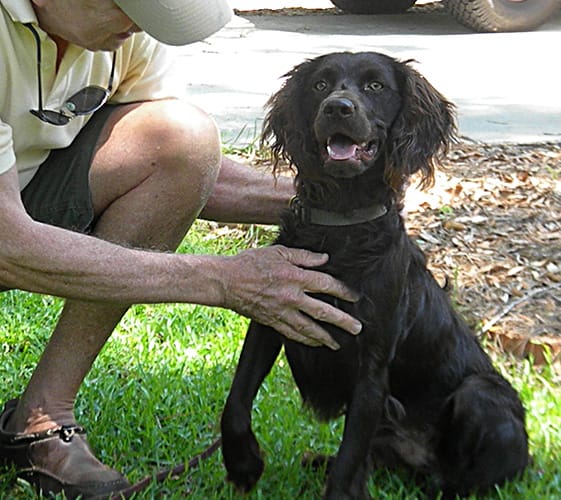Training Between the Ears
For dogs who need help with conditioned relaxation and/or with perception modification, K-9 SOL offers Training Between the Ears (TBTE), Mark McCabe’s behavior modification program. The goal of obedience or TBTE is clear communication between owner and canine. However, obedience based models—both positive and balanced—continue any rewarded behavior only differing in methodology. TBTE teaches the dog to make good choices on his/her own.
Common equipment for TBTE would be a martingale or flat buckle collar, a six foot leash, a treat pouch with treats (or the dog’s kibble) and a squirt bottle. TBTE does use punishment as an interrupter to stop negative behavior and to help dogs move forward who are stuck in behavioral ruts. TBTE also uses a vocal marker (Yes!), vocal bridges (intermediate and terminal) to move dogs from a behavioral difficulty—an aversive—toward something more appealing—appetitive. (i.e. usually food but sometimes affection or toys). We prefer food for two important reasons: dogs who are under enough stress cannot take food; this is an important mark of the dog’s Grade School Level of learning for us. Also, once the dog IS able to take food, the act of consuming food is relaxing. Think of stress eaters among your human friends.
TBTE’s goal is for the dog to do what the handler would like but for the dog’s own reasons.
- Only when dogs are choosing well in free behavior are trainers successfully fixing dogs so we have to fix the emotions (what’s between the ears) before we can fix the behavior.
- And emotionally stable dogs make good decisions when left on their own vs. when the owner is present
A secondary goal within TBTE is for dogs to learn to calm themselves. Common exercises within TBTE are Behavioral Downs (BDs) and Conditioned Relaxation (CR). Whether you decide to utilize traditional obedience, Training Between the Ears, a behavior modification and conditioned relaxation method, or some mixture pf it all, learning clear communication is essential.

“Dogs speak but only to those who know how to listen.”
